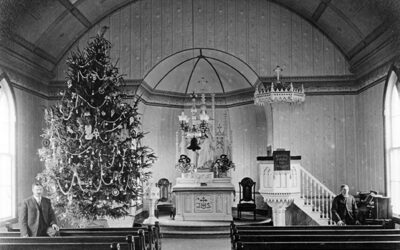The Solomon D. Butcher photograph collection comprises nearly 3,500 glass plate negatives crafted between 1886 and 1912. It was the photographer’s intention to record the process of homesteading, which he shrewdly recognized as a transient, yet important, epoch in the story of the American West. Between 1886 and 1891, Butcher generated nearly 1,500 images in Custer County, on the eastern edge of the Sand Hills.
Butcher took this tremendous volume of work and produced Pioneer History of Custer County, Nebraska, in 1901. The success of this book, one of the few successes in the photographer’s life, inspired him to expand the effort to surrounding counties, which swelled the collection’s volume to its present size. In 1904 he produced Sod Houses or the Development of the Great American Plains: A Pictorial History of the Men and Means that have Conquered this Wonderful Country.
The collection was purchased by the Nebraska State Historical Society in 1912. Butcher was hired by then Superintendent Addison E. Sheldon to document the collection. During part of January and February of 1916, Butcher added names and locations to many of his photographs and wrote a number of historical vignettes not included in his Pioneer History of Custer County.
The Butcher collection is best known for more than 1,000 photographs of the distinctive sod house. Because his photographs are densely packed both in time and space, they articulate the whole process of settlement. The 1880 federal census shows Custer County with a population of 2,902. A special state census taken in 1885, the year before Butcher began his documentary effort, shows that the population had exploded to 6,710. The census of 1910, taken two years before the collection came to the Nebraska State Historical Society, reveals a population of 15,961. If one assumes that four persons appear in each of the 1,456 photographs that Butcher took in Custer County during this period, he would have photographed 5,824 of the county’s citizens, or roughly one-third of them. Because the bulk of the work was done prior to 1900, the actual number is nearer to half. The sheer volume of pictures taken in a restricted geographic area in a short period of time is very significant because it allows for in-depth analysis. The photographs document the changes wrought by human hands as people first build simple shelters, then break the land, then add outbuildings and equipment, then build larger, more permanent homes, and finally render the once-wild land tame.



